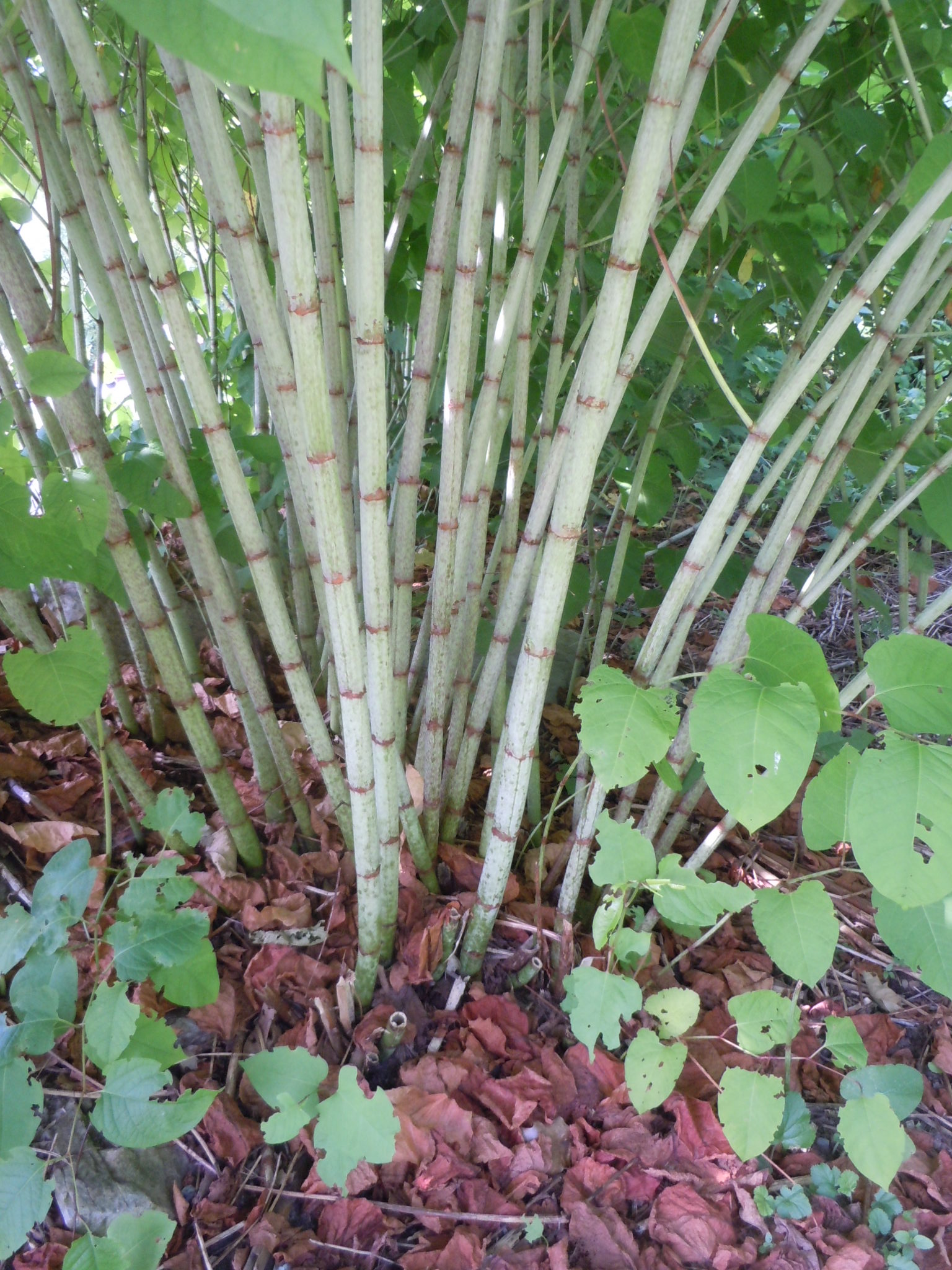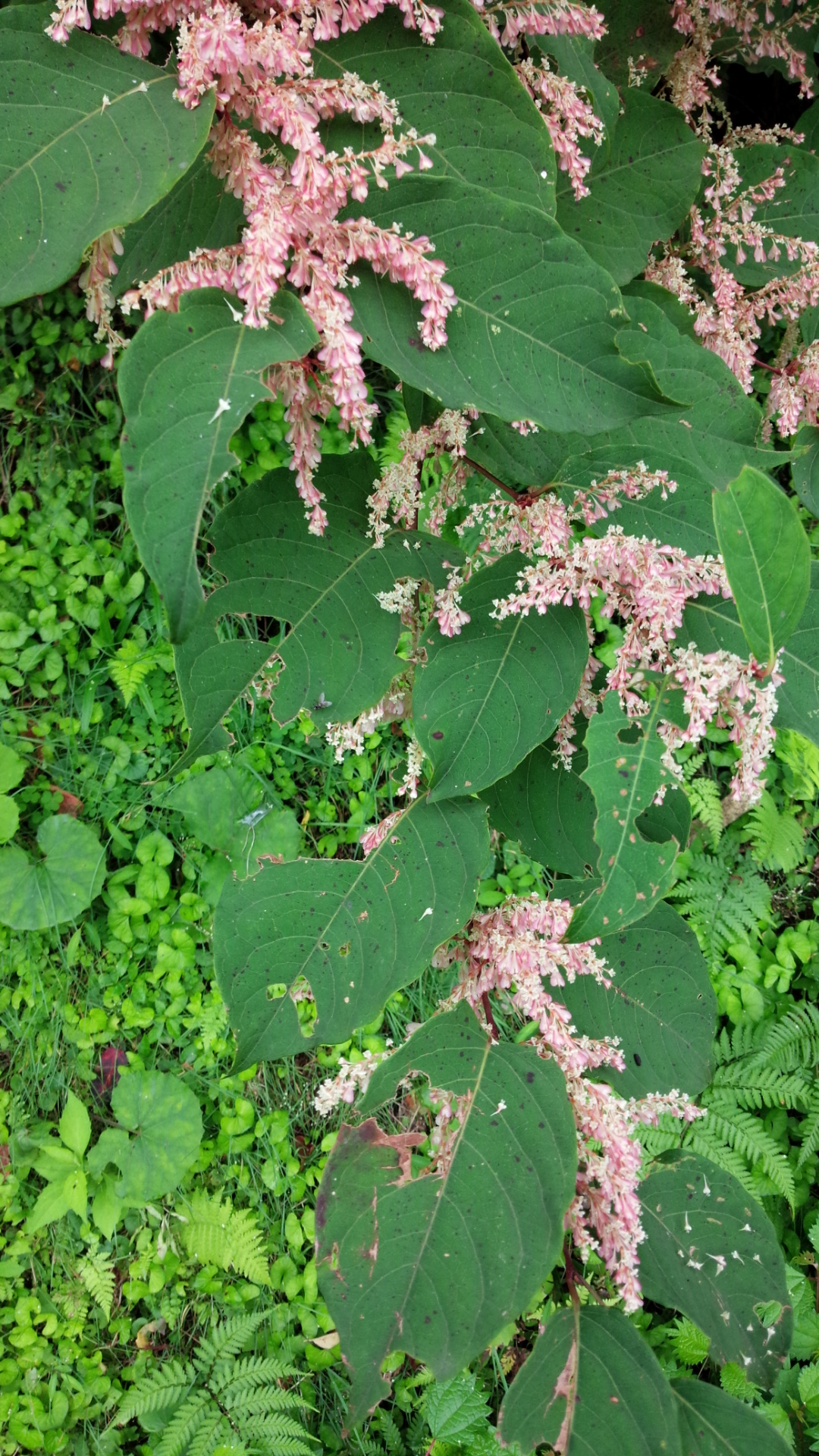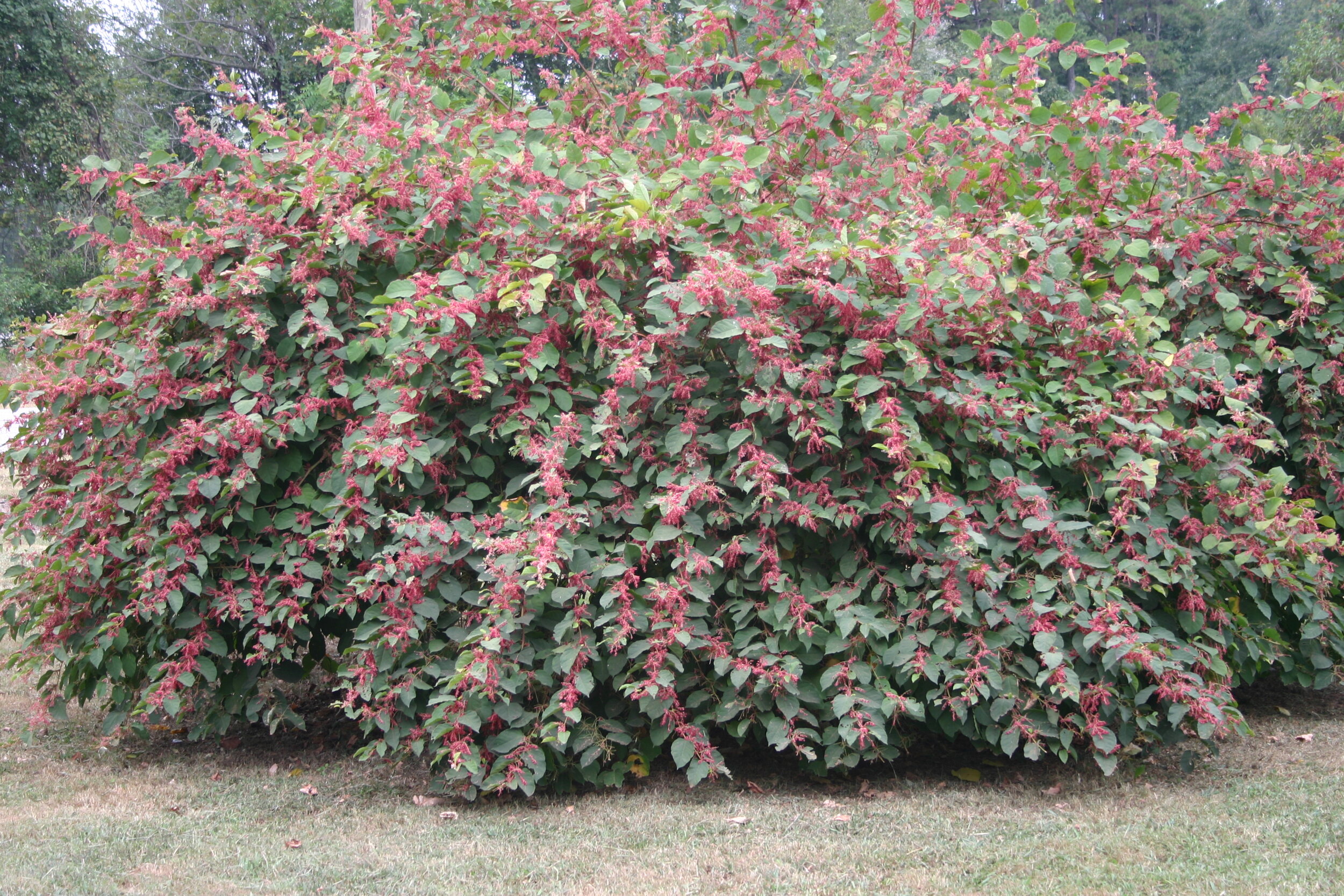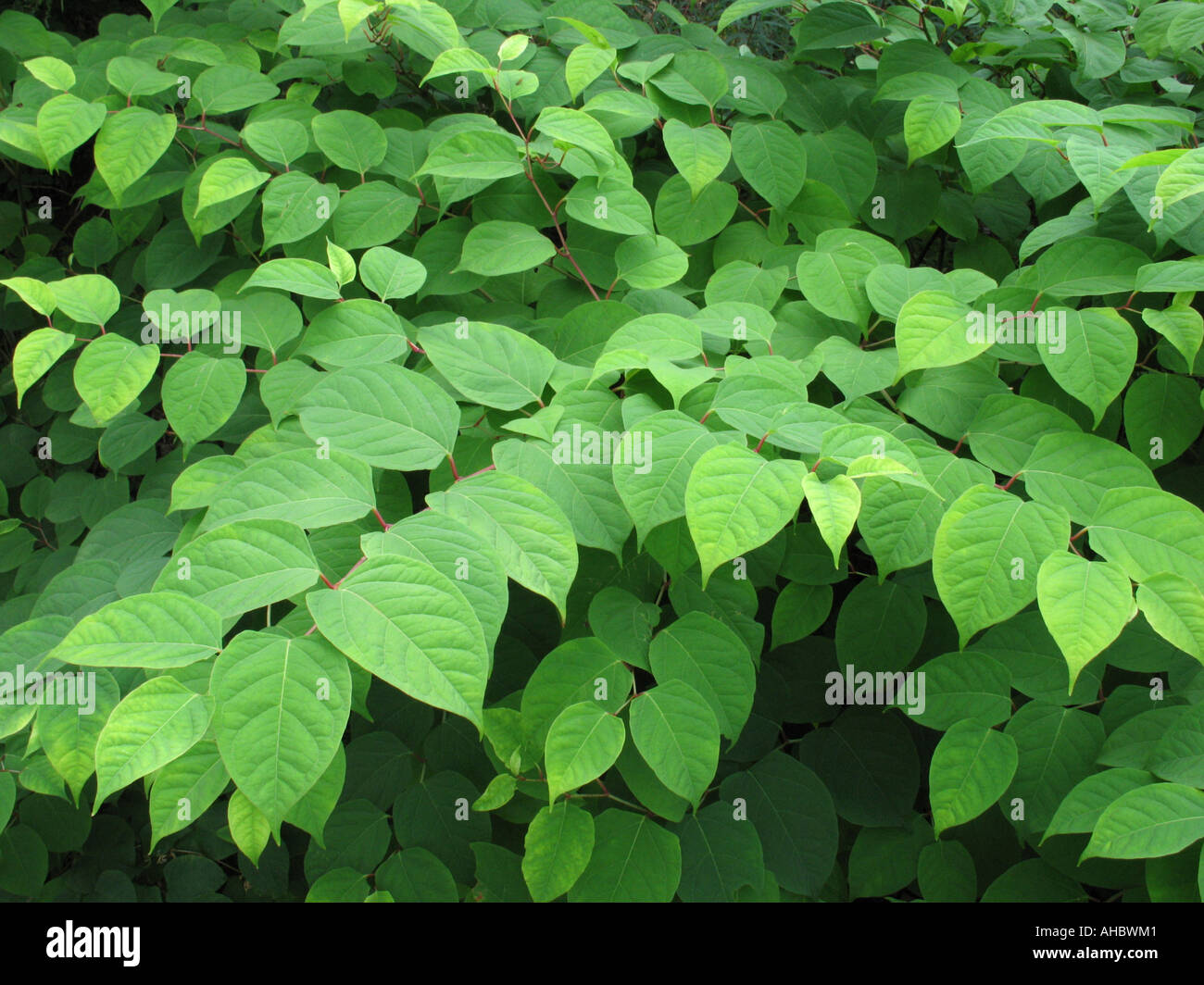Polygonum Cuspidatum Crimson Beauty
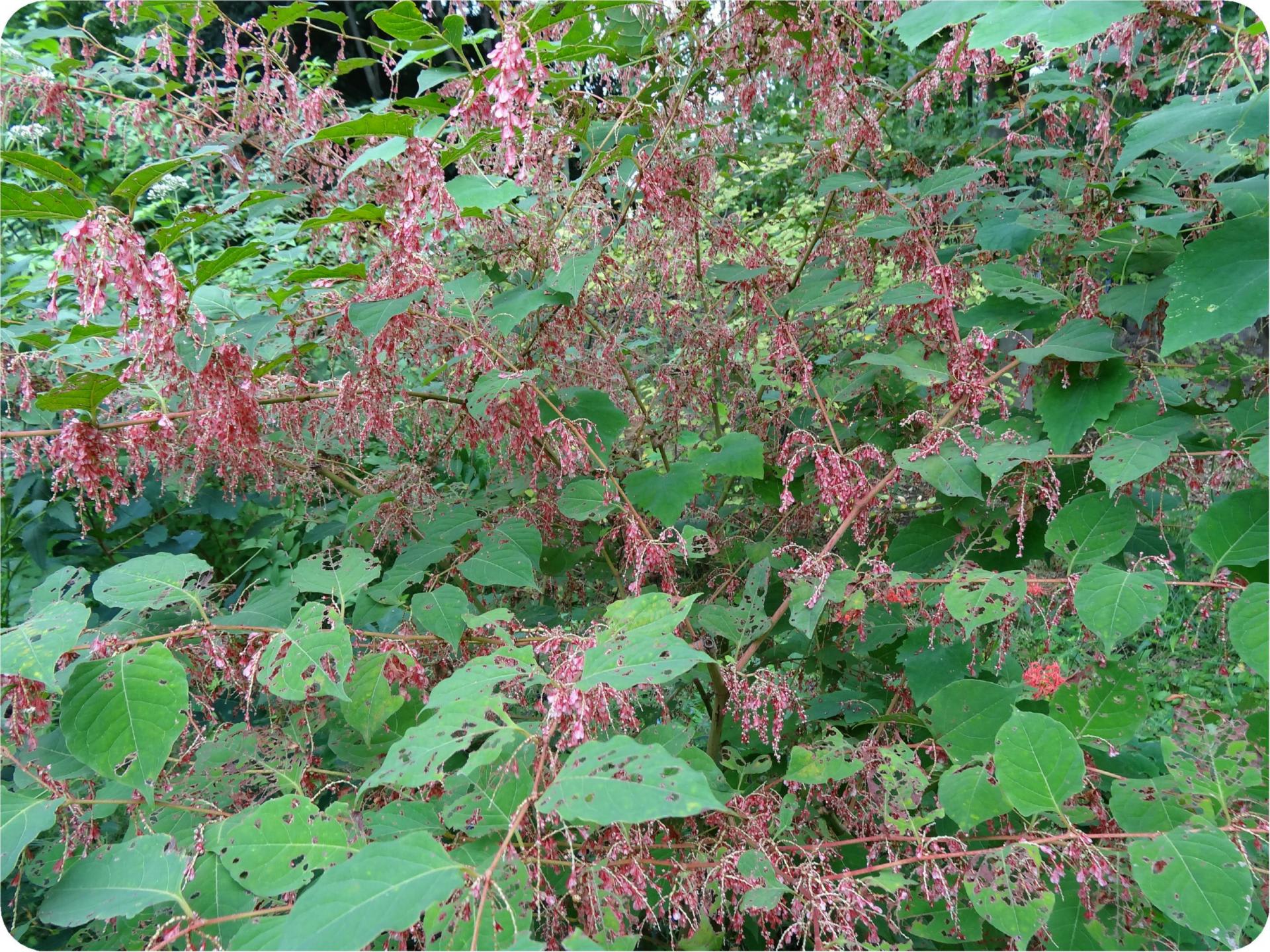
Other sources use the name Fallopia japonica var japonica Houtt Ronse Decraene 6Synonyms.
Polygonum cuspidatum crimson beauty. Polygonum cuspidatum Crimson BeautyClumping Mexican Bamboo Mexican Bamboo Specimen plant growing in the Springfield Missouri Botanical Garden soon. Polygonum cuspidatum is an upright shrub-like herbaceous perennial that can rapidly grow to over 3m in height Remaley 1997. NAME OF SPECIES.
Also known as crimson beauty Mexican bamboo Japanese fleece flower or Reynoutria it was first introduced as an ornamental and has also been used. Ocrea usually deciduous brownish cylindric 46 10 mm. Stout purple- or red-tinged asparagus-like shoots arise from thick underground rhizomes in spring rapidly elongating into imposing stems with conspicuously swollen leaf nodes.
In South Carolina the Japanese Knotweed is listed on their Invasive Plant list as a Severe Threat. Eurybia divaricata Eastern Star aka Aster divaricata Eastern Star 10. POLYGONUM CUSPIDATUM CRIMSON BEAUTY Sold Out.
The mature canes are hollow and have a characteristic pattern of purple speckles. Japanese knotweed Polygonum cuspidatum or Fallopia japonica also known as Japanese bamboo Mexican bamboo false bamboo Himalayan fleece vine crimson beauty sally rhubarb fleece flower. Japanese knotweed or Polygonum cuspidatum.
Polygonum bohemicum Chrtek Chrtková Zika Jacobson cuspidatum sachalinense Bohemian knotweed 4247 In this review species are referred to by their common names and 3 knotweeds refers to all 3 taxa. Japanese Knotweed is a highly invasive species native to Asia introduced as an ornamental in the United States in the 1800s. Eutrochium dubium Little Joe aka Eupatorium dubium Little Joe Dwarf Joe Pye Weed 11.
Zucc Japanese knotweed commonly known as crimson beauty Mexican bamboo Japanese fleece flower or Reynoutria was probably introduced to the US. Polygonum cuspidatum Siebold Zuccarini family POLYGONACEAE Treatment Author s Craig C. 25 glycophosphate helps on cut stems.
